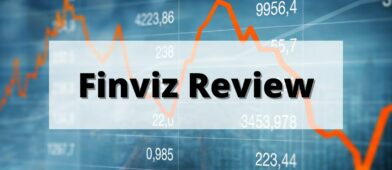I started investing when I was 18.
My dad told me about Roth IRAs and we opened an account at Vanguard, which is the broker he used.
Back then, commissions on stock trades were exorbitant. I don’t recall what I paid but I wouldn’t be surprised if it was something like $15 a trade.
As a beginner investor with very little money, I couldn’t afford $15 a trade. It was doing the dot com boom so every technology stock was doing great so $15 a trade didn’t seem all that bad. Eventually, after being lightly toasted on a few stocks (any JDS Uniphase fans out there!?), I just put it all into the Vanguard STAR fund (VGSTX) because it had a $1,000 minimum.
When you’re just starting out, you want an easy to use interface, low or no commissions, no fees, and the willingness to avoid the complex stuff that’s out there. That includes complex financial instruments and complex tools that will only confuse you.
Table of Contents
These brokers are not in any particular order, they are all good for new investors.
1. Ally Invest

Perhaps I am biased because this is my primary brokerage (besides Vanguard where I hold my Vanguard funds) but Ally Invest was very easy for me to use as a new investor. The pricing has only improved over the years (thank you competition!) and there is no minimum balance required.
One nice perk of Ally Invest is that you can link up your Ally Bank account, which lets you see all of your finances in one place.
- Minimum balance – $0 for self-directed brokerage accounts. Margin accounts require a $2,000 minimum and Robo portfolios require a $100 minimum.
- Costs – $0 for Stocks and ETFs, $0 for Options, $1 per Bond, $9.95 for mutual funds
- Fractional Shares – Not on purchases but you can reinvest dividends into fractional shares (as long as the stock or ETF trades above $4 per share).
- Bonus – They offer a transfer bonus of up to $3,000 if you transfer in a large sum (lowest bonus starts at $10,000).
Visit Ally Invest to learn more ↗
2. Vanguard

Again, I’m biased because I use Vanguard but they are great for their low cost mutual funds and ETFs.
The interface is also easy to use without a lot of complexity. Vanguard doesn’t offer much in terms of stock picking tools and analysis but there are plenty of those available online for free. It doesn’t have some of the more sophisticated tools like Level II quotes but a new investor won’t need that.
Vanguard offers low cost mutual funds, ETFs, and index funds and that’s what most new investors should be invested in anyway.
NOTE: Fidelity is also a great mutual fund company for new investors. I view the two as interchangeable and I tend to list Vanguard because it’s the brokerage I use. Fidelity is more likely to have an active promotion, but otherwise the two are very similar.
- Minimum balance – $1,000 for their funds ($3,000 for Admiral shares)
- Costs – $0 for Stocks, Mutual Funds, ETFs, Bonds, and Options ($1 per contract). Their mutual funds also charge no fee if you sign up for electronic statements (otherwise $20). A few of their mutual funds charge a purchase & redemption fee of 0.25% to 1% to discourage trading.
- Fractional Shares – Not yet but they were piloting a test program letting some investors buy fractional shares of some ETFs.
- Bonus – They do not offer a bonus.
Visit Vanguard to learn more ↗
3. Public
Public is a newer entrant to the brokerage world but they offer a very competitive service that acts as a one stop shop for all of your investing needs. You get what you get with other discount brokers – no commission on trades of stocks, ETFs, and mutual funds. More importantly, they don’t make up for that lack of fee by accepting Payment for Order Flow (something other brokerages do to make money).
If you’re interested in crypto and NFTs, this is where Public stands out because they offer those as well plus they don’t charge a commission for crypto transactions (there is a fee charged by Apex Crypto though, Public doesn’t charge it).
They also offer a transfer bonus on this schedule:
| Transfer Amount | Bonus |
|---|---|
| $5,000 – $24,999 | $150 |
| $25,000 – $99,999 | $250 |
| $100,000 – $249,999 | $600 |
| $250,000 – $499,999 | $1,000 |
| $500,000 – $999,999 | $2,000 |
| $1,000,000 – $4,999,999 | $4,000 |
| $5,000,000+ | $10,000 |
- Minimum balance – $0
- Costs – $0 for stocks, mutual funds, ETFs, crypto, and alternative investments.
- Fractional Shares – Yes, they call them “slices.”
- Bonus – They offer a new account bonus when you transfer in at least $5,000 (you get $150).
4. E*Trade
E*Trade is one of the oldest discount brokers and it’s a testament to the service that they’ve been around so long. They’d been acquired by Morgan Stanley in 2020 but maintained nearly everything that made them popular.
E*Trade boasts the same commission structure as many other discount brokers – no fees on stocks, options, and ETFs. $1 for bonds (online secondary trades) and $0 for no-load, no transaction fee funds.
They have 24/7 customer service via phone, email, and chat – a nice feature if you really want to speak to someone. They also have quite a few local branches that are temporarily “closed” for walk-in customers due to Covid but you can call them to make an appointment.
- Minimum balance – $0
- Costs – $0 for stocks, mutual funds, ETFs, many bonds, and options (65 cents per contract).
- Fractional Shares – Not on purchases but you can reinvest dividends into fractional shares (as long as the stock or ETF trades above $5 per share).
- Bonus – They offer a new account bonus when you transfer in at least $5,000 (you get $50).
5. Merrill Edge
Merrill Edge is the self-directed arm of Merrill Investing, which is now part of Bank of America. As you’d expect with a broker on this list, you get unlimited free trades of stock, ETF and options trades plus no minimum balance required.
They also have 24/7 customer support via phone, chat and email – plus you can get an appointment with someone at a local Bank of America.
Speaking of Bank of America, your balance is counted towards the Bank of America Preferred Rewards program. The most appealing part of that program is the 25%/50%/75% bonus on credit card rewards, if you use a Bank of America credit card.
Another nice perk is that you can get a new account bonus based on the amount of assets you transfer or deposit into the account – up to $1,000 right now.
- Minimum balance – $0
- Costs – $0 trades of stock, ETF and options (65 cents per contract).
- Fractional Shares – No, Merrill Edge does not offer fractional shares.
- Bonus – They offer a bonus of up to $1,000 with the lowest bonus of $50 when you transfer in $5,000.
Visit Merrill Edge to learn more ↗
What We Looked For
We put together this list of the best online brokers for beginner investors because this is the list I wish I had when I started investing.
These are the factors we considered:
Low or no minimum balance requirements
New investors all share one thing in common, you don’t have a lot of cash. New investors should lean on brokers that have low or no minimum balance requirements because it removes one hurdle. If you have to wait until you’ve saved up $3,000 to open an account, there’s a good chance you’ll spend that money.
Low costs
It is really easy to find a great online broker that does not charge you for stock trades. The same goes for ETF trades. Since those are the table stakes, you then want to make sure there aren’t any account maintenance or monthly fees.
Offers Fractional shares
When you’re a new investor without a lot of funds, it’s sometimes nice to be able to buy fractional shares of companies you like. This is a nice to have feature that not many brokers offer.
Easy to use interface
I’ve used a lot of different brokers in my time and some of them can be very overwhelming to a new investor. That doesn’t make them terrible brokers, it just makes them a bad fit for new investors. And easy to use also means easy to accomplish the tasks you want very easily. It can’t be too simple.
Makes sense for experienced investors too
At some point, you’ll become more comfortable with investing and you may want a brokerage that offers other services too (with good pricing).
A Bonus Promotion doesn’t hurt
A lot of brokers, especially the new ones, will give you cash or stock to open an account. This is a very low factor but something to consider.
Notable Exclusions
Brokers You Hear In The News
You may have noticed that I excluded a few very well known brokers (I share the best stock trading apps here) and seem suitable for new investors. Some of these you’ll find listed prominently on our best brokerage promotions page because of how aggressively they try to win new customers.
Not every brokerage that I skipped was skipped for this reason. For example, there are plenty of brokers that best for active traders who deal quite a bit in options and futures contracts. I don’t think new investors need to dabble in options or futures.
But I’m sure you noticed I skipped a few notable names. On the whole, this new breed of brokerage is perfectly fine from performance perspective – they tick all the checkboxes.
But they may be unsuitable for new investors because of how much they try to entice new investors into financial products that don’t benefit them. They benefit the brokerage (notice how many brokers don’t charge for stock and ETF trades but they do charge contract commissions on options trades?).
This is how you end up with stories about a 20-year-old “trader” who took his own life. It’s incredibly sad.
While I don’t put all the blame on the platform for what happened, I also can’t recommend them for someone just starting out on their investing journey either.
Various Savings Apps
I’ve also excluded apps that help you get into investing by dripping a little money here and there, rounding up your spending and depositing it, etc.
I skip these because I think that new investors need to be intentional about their investing. I don’t think it makes a lot of sense to use these investing apps if you want to get serious about investing. The apps themselves are good – anything that promotes saving more money is a positive.
For example, Acorns is a great app that helps you invest more by transferring spare change. You set up a Checking account and an Investment account. When you use your debit card, your transactions are rounded up and put into an investment account. Totally fine.
But when you’re a new investor, I think it’s better than you think about your asset allocation, how much you want to save each month, and set up those automated systems rather than relying on dripping a few cents here or there for your future.




Hi Jim: I like C. Schwab because you can self -direct, trades are free, their statements are easily understood. I do not buy municipal bonds from Schwab because I can do better with a couple of other BOND BROKERS–then I request, along with the check I pay for the bond with the request that they transfer the bond into my acct at C. Schwab acct #xxx after all is settled. This way a long- term holding stays in my main acct. and I just transfer the funds as they arrive into my checking acct and most of my bills are… Read more »